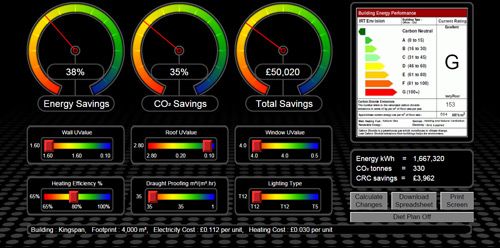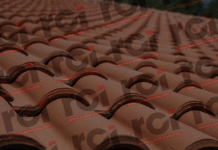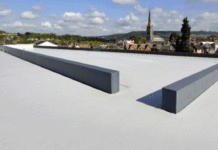

New Government legislation MEPS (Minimum Energy Performance Standards) are likely to come into play in 2018, forcing all building owners who let their properties to have an energy rating of E or above. The MEPS, introduced under the Energy Act 2011, are part of the Government’s efforts to reduce the UK’s CO² emissions by at least 80% from the 1990 baseline before 2050. In order to do this building owners are being encouraged to improve the quality of the fabric of their existing buildings.
In light of these changes, it is becoming more important than ever that building owners and businesses ensure their properties are adequately energy efficient. The new MEPS regulations mean that it will become unlawful to rent a building that has an F or G EPC rating.
The full regulations are currently being deliberated by parliament, with many believing that the Government is going to go even further than previously expected. Many owners and businesses could be caught out. According to data from the national EPC register, 18% of all UK buildings currently fall below the required rating. However, with two planned shake ups to the EPC rating system itself, experts forecast that a massive 31% of the built environment will fall into the unlettable F or G rating categories.
There is a huge backlog of refurbishment work to be done to existing buildings to make sure that when 2018 comes round they are hitting targets. In fact, many buildings will be unable to achieve the rating – but for others, the roof is a good starting place. Roofs and insulation can be vastly improved while the building is occupied and with little disruption. Savings of between 10-35% can be achieved depending on the current make-up and chosen specification.
As we all know, refurbishment works such as this have the added benefit of saving the client money on energy costs in the long run. It’s a well-known fact that proving return on investment (ROI) is a critical requirement for businesses, no matter which industry they operate in. In construction terms, it is important for specifiers, contractors and suppliers to be able to illustrate the value of a refurbishment to a client in order to secure contracts and get repeat business.
However, up until now, accurately calculating the payback on works to improve the energy efficiency of a building has been almost impossible. This has raised real issues. If a client cannot see a monetary figure for the long-term cost savings of a refurbishment, it can be difficult to prove the true value of the work.
At Sika Roofing (the umbrella brand for Sika Sarnafil, Sika Liquid Plastics and Sika Trocal), we realised that in order to help firms gear up for compliance with the 2018 MEPS, this ROI issue had to be tackled, which is why we have developed an insulation payback calculator. With insulation partner Kingspan and the Thermal Infra-red expertise of IRT, we have created a scientific way of measuring ROI for thermal insulation, enabling us to show the client just how much they can potentially save over the life of their building.
Three steps
The method has three steps. Firstly, an initial infrared survey is undertaken to establish the current performance of the roof insulation and any areas of concern. Previously, if the existing insulation was saturated, compromising the thermal integrity of the building, the only way to check the whole roof would be through multiple core samples; a prolonged and costly process. Any saturation can now be identified through infrared technology, highlighting to the client the extent of what needs to be replaced and how the current status is affecting the thermal integrity of the building. This gives the client the ability to confidently budget for the extent of the insulation that needs to be replaced.
The survey is followed by an in-depth analysis to arrive at the correct roof specification. This step involves an innovative interactive carbon dashboard, which is a simple website where you can move sliders and see savings on three clear speedometers. It also shows the likely impact of the retrofit on the EPC rating of the building – a vital consideration if building owners want to meet the MEPS.
Once the work is completed, Sika Roofing then re-surveys to ensure the energy saving is as expected, giving the client true peace of mind. The combination of the best specification and a thermographic report will offer best value to the client, reducing the performance gap, contributing to environmental targets and helping the tenants of the buildings reduce their operating costs. All while making the job of the contracts manager that bit easier.
The financial impact of MEPS cannot be underestimated. If the legislation comes through as planned it may leave many buildings unoccupied and drastically reduce the value of portfolios. It is our responsibility as suppliers to help clients see the value of conducting refurbishment works in good time, so they’re not caught out. Being able to calculate the impact of works in terms of kilowatts, carbon and cash brings the construction industry in line with many other sectors – it enables us to be transparent and support clients in making wise investment decisions for the future.



